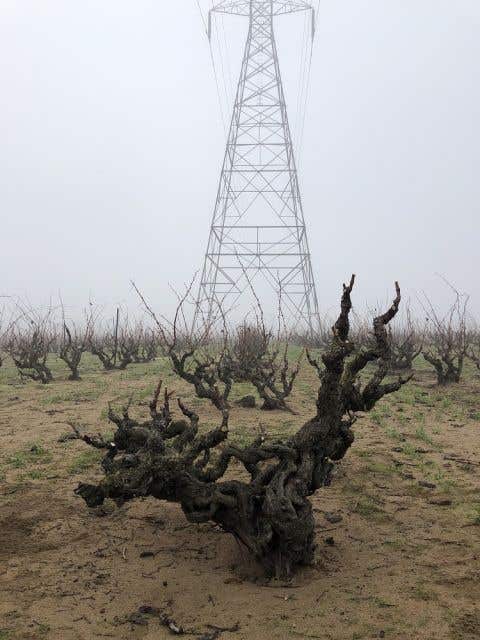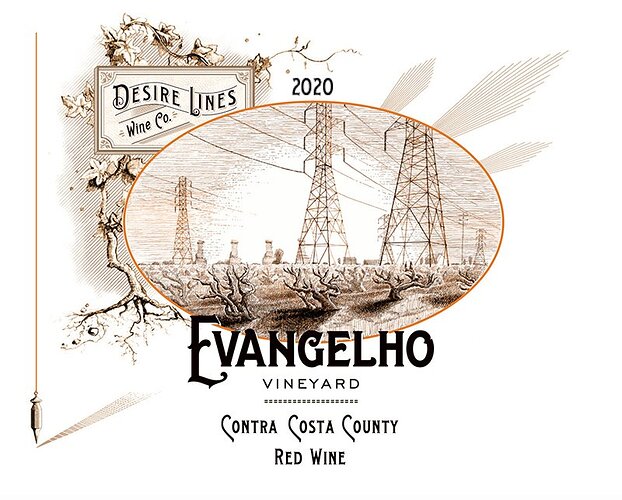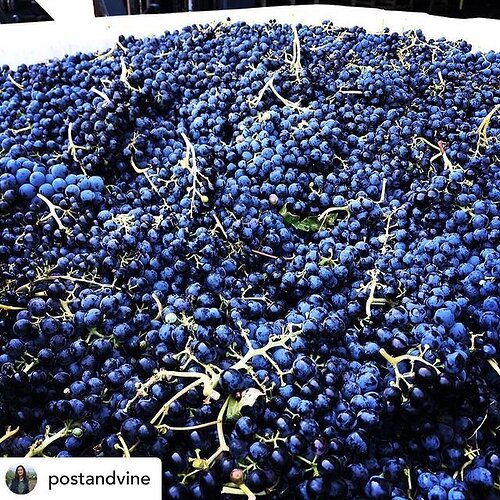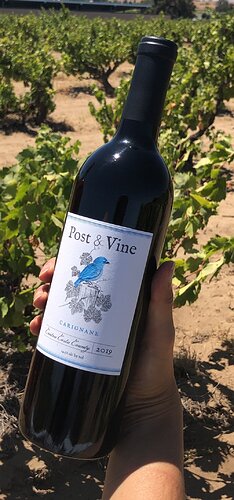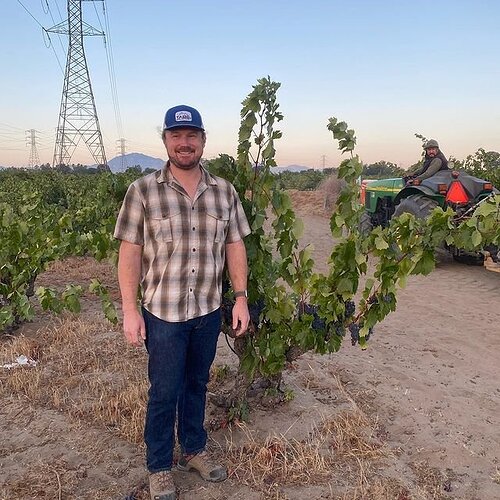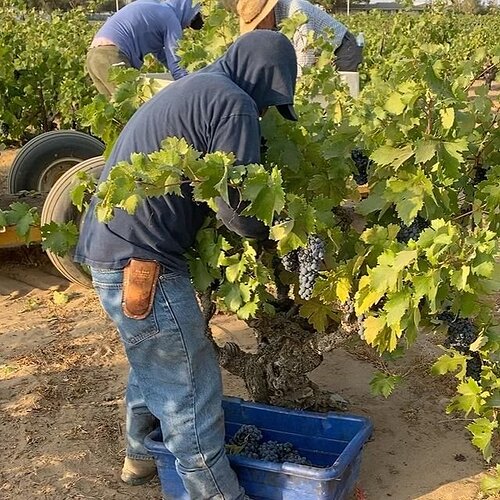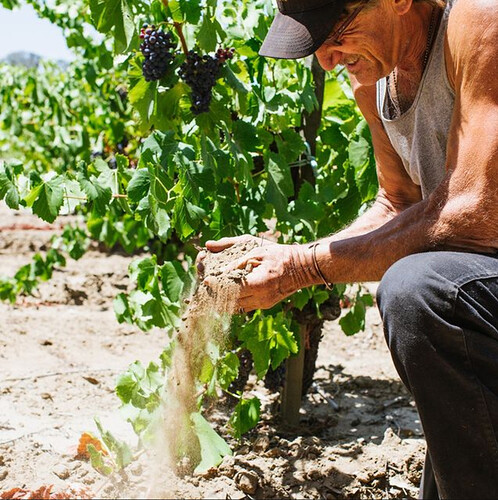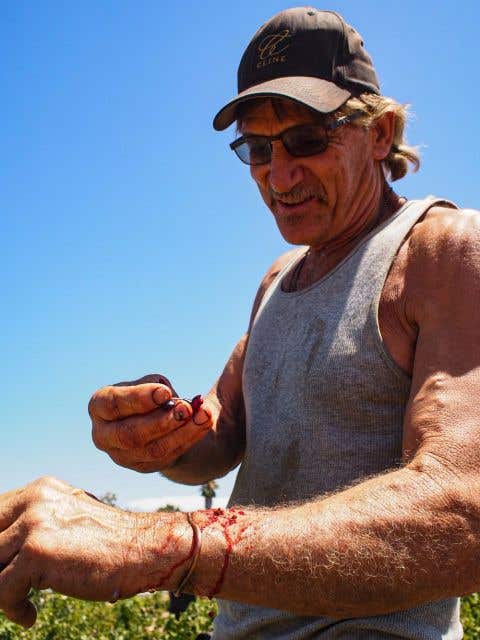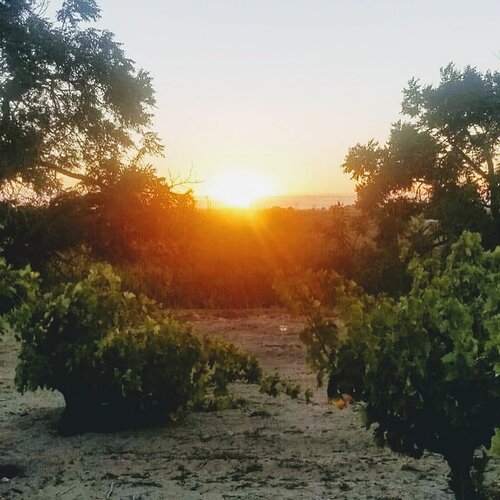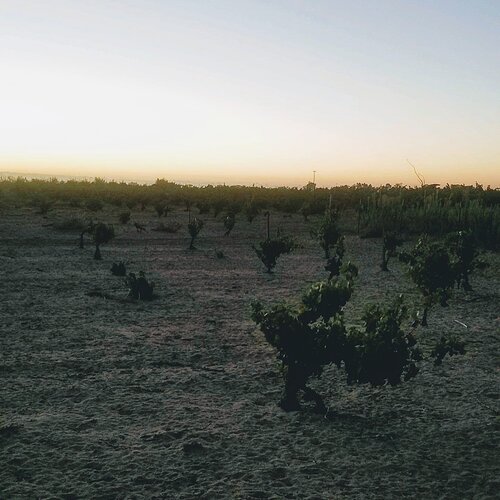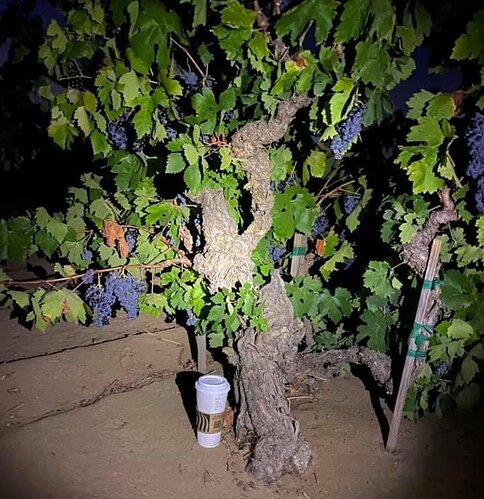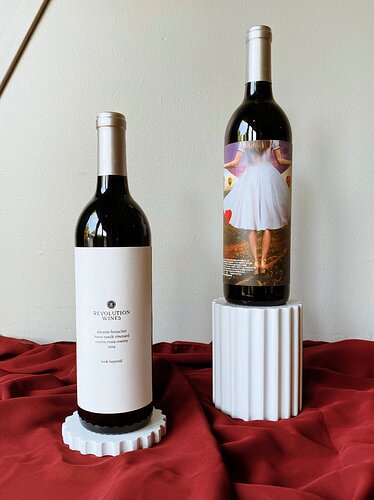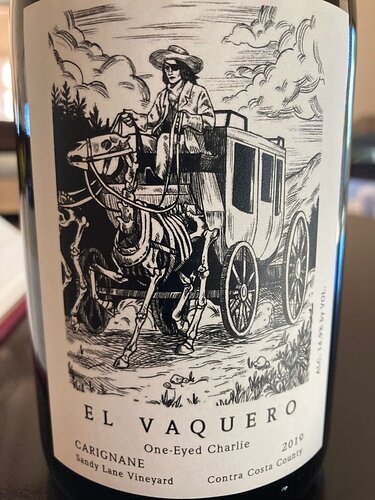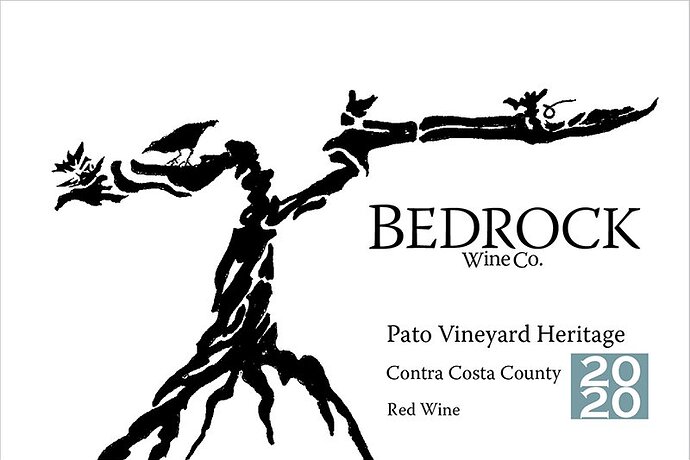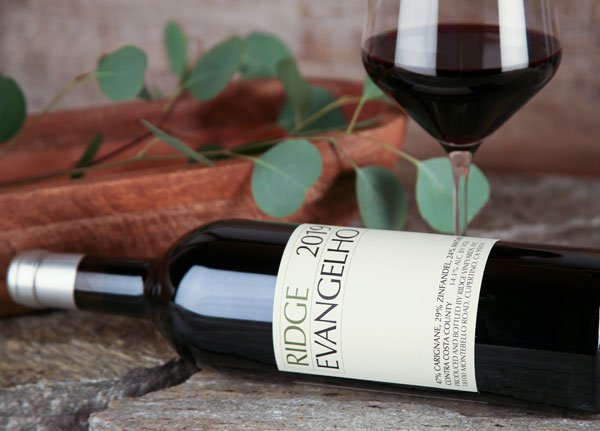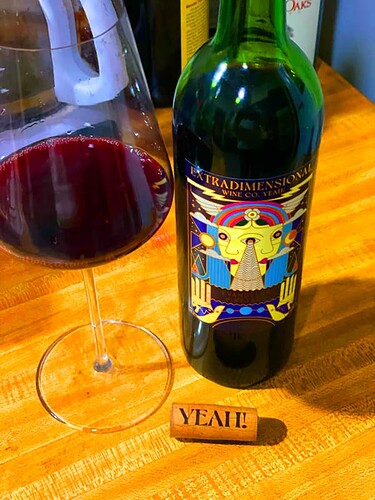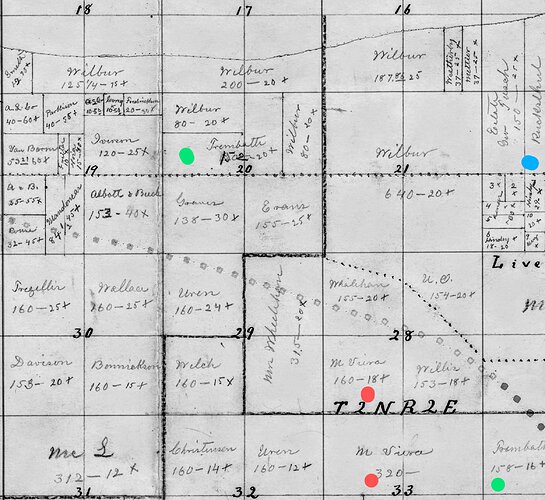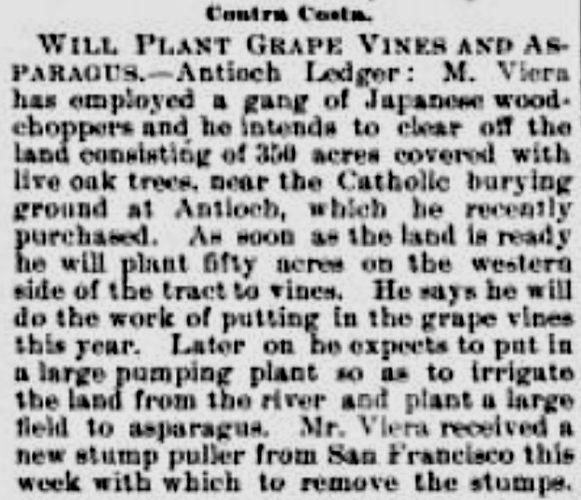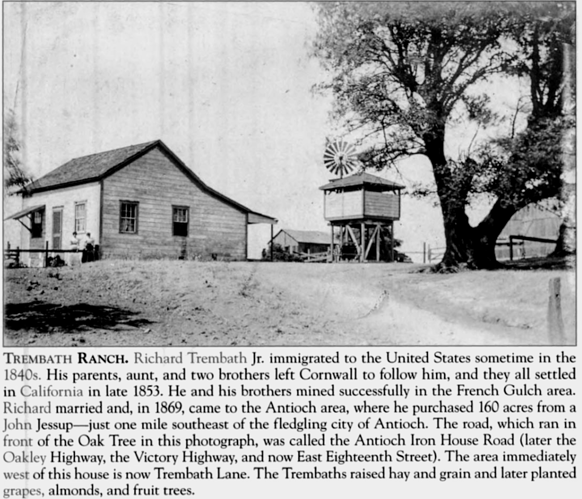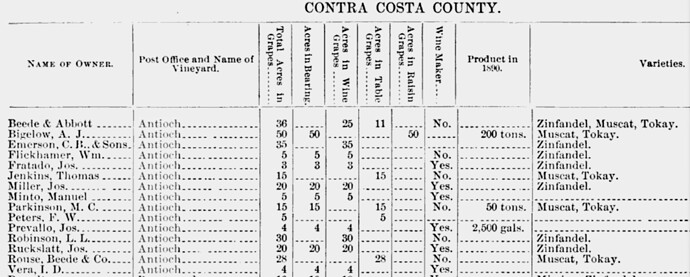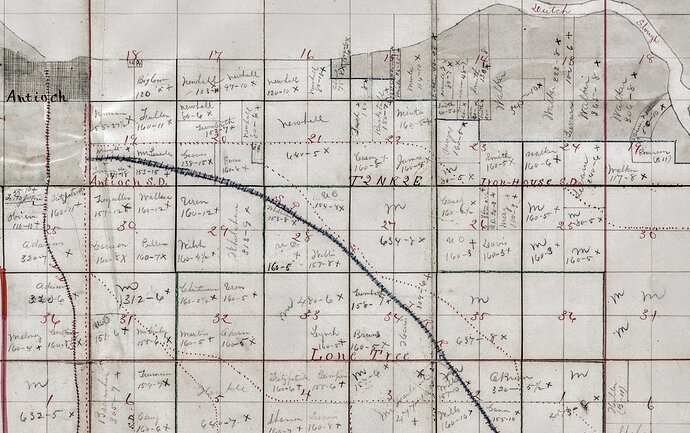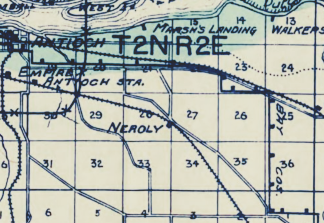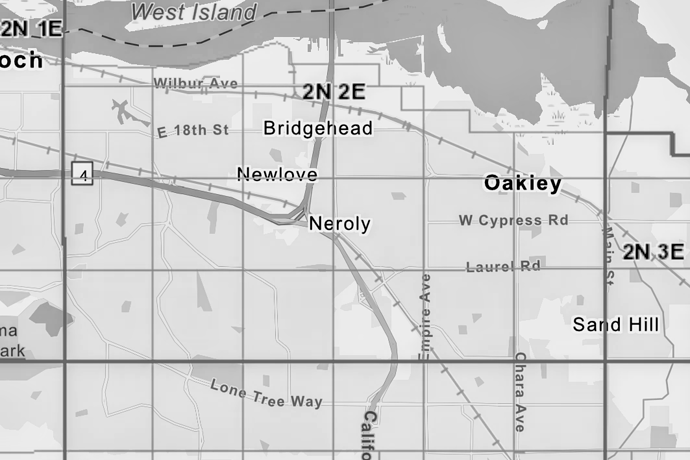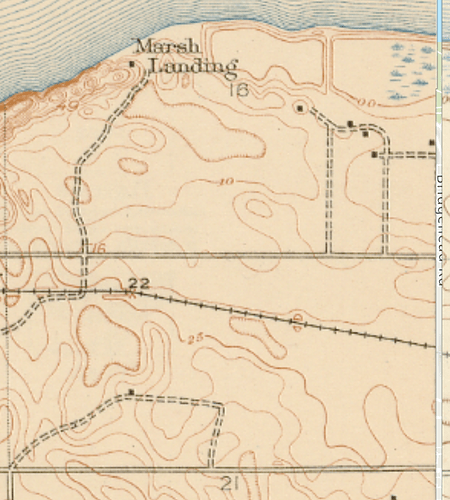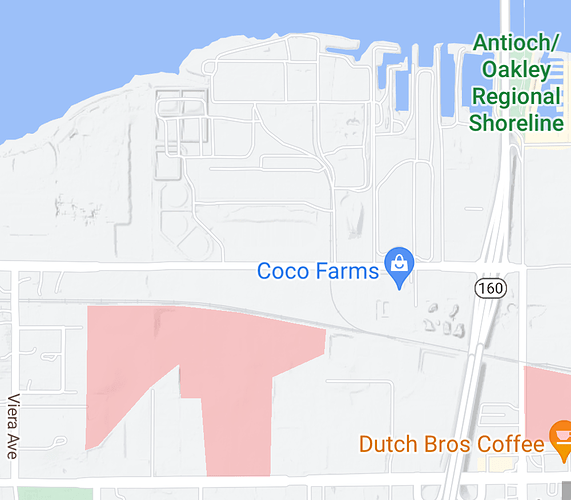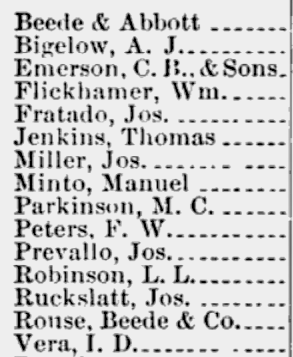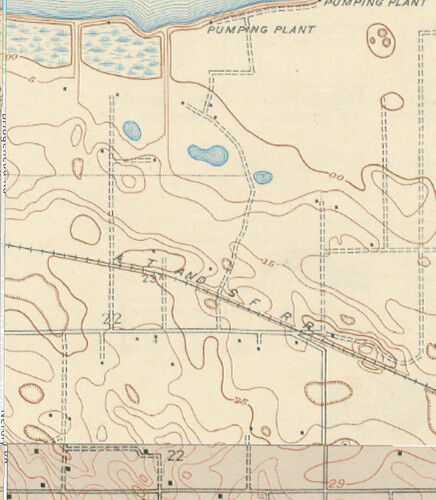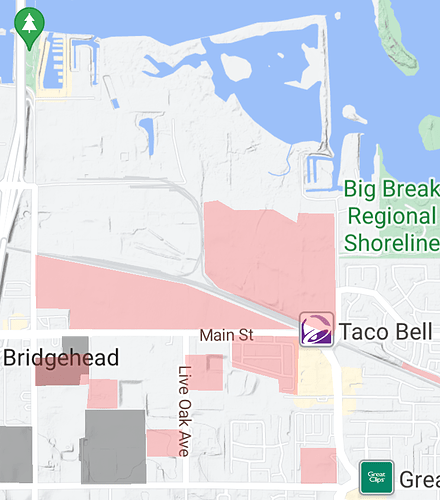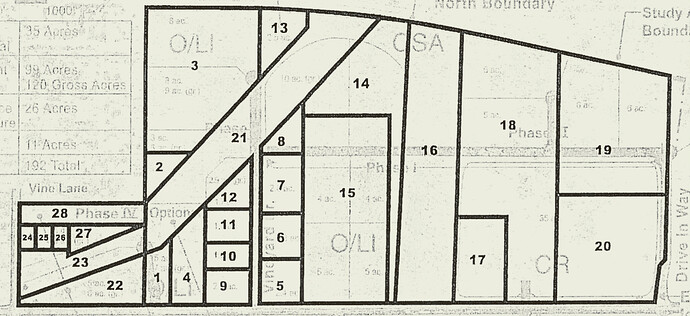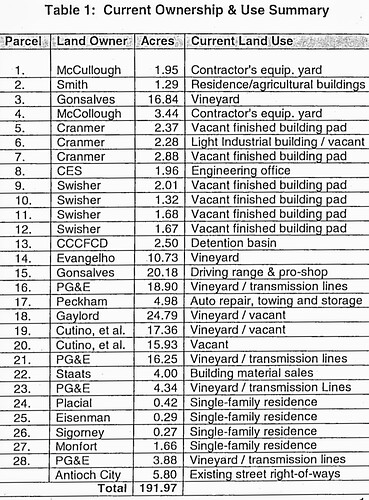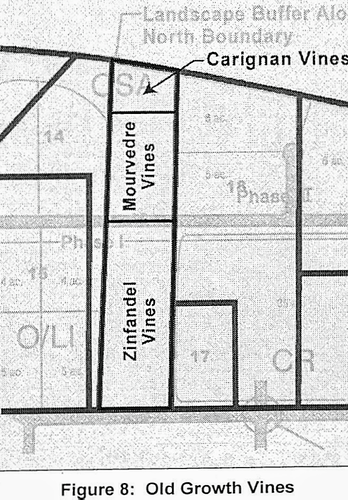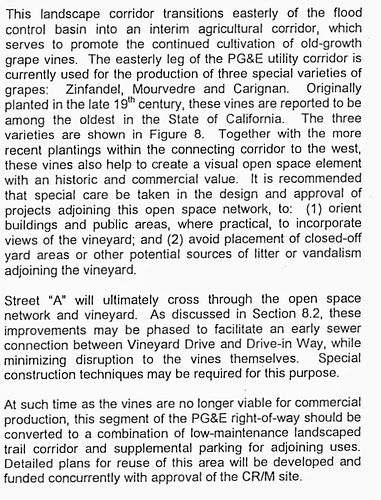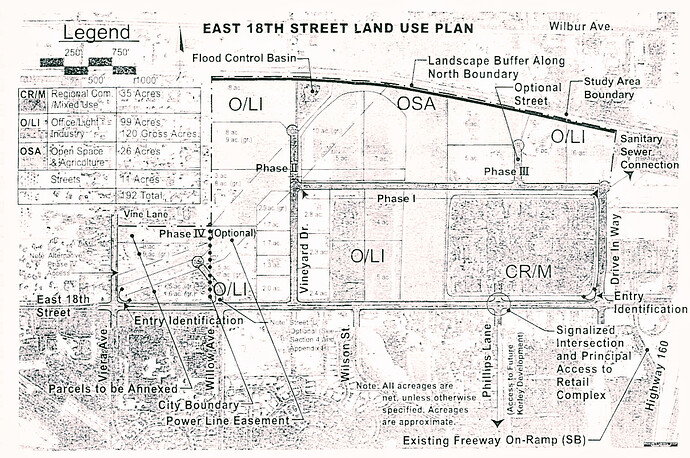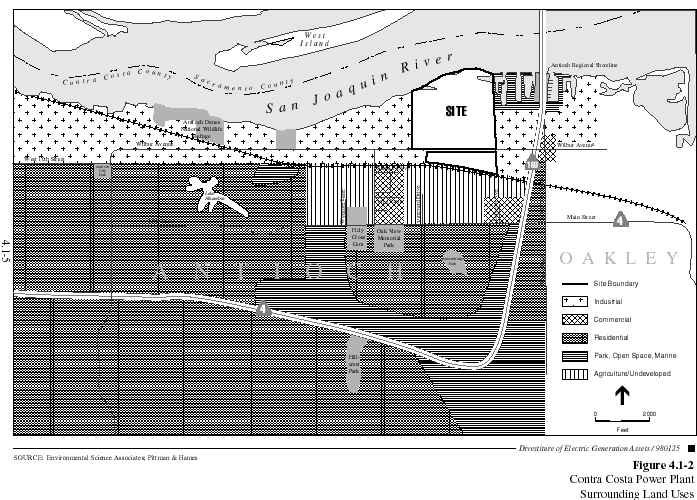I am including a map from Antioch’s “East 18th Street Specific Plan” (Sept. 2001) for comparison with the 1892 Parcel Map image:
According to the 20-year-old map’s “Current Ownership and Use Summary” guide, vineyards occupied 8 of the 28 parcels.
Pacific Gas & Electric (PG&E) still retains easements/right-of-way for lands traversed by its power lines. Wizened vines claim strange sanctuary beneath the towering structures.
The following grape-growing families are identified in the 2001 “Current Ownership & Land Use Summary”:
- Gonsalves
- Evangelho
- Cutino (Meadows)
Gaylord Container Corporation once owned the plot of grapevines in Parcel #18. Those eventually were uprooted.
Gonsalves:
In a recent thread post, I speculated that Parcel #3 was the “Little Big Patch Vyd”. Parcel #15, the “Driving Range/Sand Pit Vyd”, currently is for sale. The Gonsalves family farms, leases, or owns ~10 vineyards in eastern Contra Costa, totaling around 100 acres. Properties are managed by Gonsalves Vineyards, Sandy Lane Properties L.P., and the “B” Trust of the Gonsalves Family.
Evangelho:
Parcel #14 (10-acres) of Frank Evangelho’s vineyard, was purchased by Bedrock Wine Company in 2017. The winery leases another 26 acres from PG&E (#16 and #21?). These components make up the “Evangelho Vyd”.
Cutino:
“Carla’s Vineyard” occupied Parcels #19 and 20. Today, it is a parking lot for a stripmall (formerly a K-Mart). The vineyard was named for Carla Cutino-Meadows, wife of the late Dwight Meadows.
As of 2021, the “Evangelho Vyd” and the Gonsalves family’s vines still remain. PG&E utility lines also harbor some ancient grapevines.
The December, 1999, “East 18th Street Specific Plan” was devised to navigate “constraints within the planning area, in order to facilitate coordinated development of these 192 acres as a modern business park” (i). Authorization to proceed with developing the plan was given in December of 2001 (City Ordinance 986-C-S 12-11-01).
The plan’s emphasized commercial expansion. Allegedly, only the “oldest” vines would be spared (Parcel #16). All other plantings are at risk of being uprooted!
Additionally, the project designs stated that the vine-bearing lands beneath PG&E transmission lines could be secured - either through an agreement with the utility company or via lease/purchase by the city.
Eventually, the grapevines were to be replaced with parking spaces or a similar low-profile structures:
The “E 18th St Specific Plan” represents the City’s long-term goals. For now, most of the project has not be completed. Nevertheless, many acres of ancient vines (“Open Space/Agriculture” on the “Final Vision” map)
were rezoned for eventual “Office or Light Industrial” applications.
The “Evangelho Vineyard” may become the final remnant of Northeast Antioch’s viticultural legacy.
“Little Big Block Vineyard”:
The following information comes from the data sheet for the 2019 Birichino “Old-Vine” Contra Costa Mourvèdre:
"‘Face in the hot sun and feet in the water’, or so the old saw goes, describing the preferred environment for Mourvèdre. Today, a dwindling patchwork of densely planted, very old vineyards perseveres in the face of an expanding sea of densely planted, very new homes.
"These head-trained vines, planted in pure, deep sand, needn’t default to the conventional template of rusticity: tannic and often forbiddingly concentrated by the bayonet of saignée. Indeed, they’re ideal for a wine altogether different - elegant, darkly aromatic, supremely persistent, buoyant and soignée. Lest anyone infer the wine lacks grip or tension, rest assured they shall be greeted by the trademark Birichino ‘ninja tannins’, sitting coiled beneath the wine’s surface, ready to strike, only to vanish leaving behind but a shadow.
“Beginning in 2019, we have sourced old vine Mourvèdre from a ‘new’, very old vineyard planted c.1895, immediately adjacent to ‘Evangelho Vineyard’. This dry-farmed site produces a darker, more exotically pungent wine than that relied upon for previous vintages, suggesting black fruits, hothouse flowers and the subtle yet undeniable fragrance of marzipan found in many of Contra Costa’s best bottles. Whereas Mourvèdre harvests in Bandol and San Benito typically extend well into October, this pre-dawn pick in 2019 was relatively late for Contra Costa, with a rare foray into the first week of September.”
*** EDIT ***
“…Of the total 28.6 acres of Farmland of Statewide Importance, 21.5 acres are within Subarea 1 and 7.1 acres are within Subarea 2b. As of October 2012, all of these lands are in agricultural use. Subarea 2a is fully developed with other uses and has no lands in agricultural use or designated as farmlands. (The project site also contains approximately 26.2 acres of Farmland of Local Importance, which is not considered a protected category of agricultural lands under CEQA)” (p.16).
"The project area includes lands designated as Farmland of Statewide Importance (or, under LAFCO criteria, Prime Farmland). As noted above, the project would not result in any change to any existing land use. Antioch Municipal Code Section 5-3809 allows for the continuation of existing agricultural uses on a site when that site’s zoning designation may be changed. Moreover, through the project’s prezoning, the City would perpetuate existing County zoning allowable land uses. Portions of Subarea 2b would thus retain an agricultural zoning designation. In addition, the majority of the land currently in agricultural use consists of grapevines located within easements and rights of way owned by PG&E, which practically cannot be occupied by permanent structures.
“Given the existing site conditions, the project’s proposed retention of agricultural zoning designations, and the stipulations within the proposed prezoning for any change of use, the project’s potential to hasten conversion of agricultural lands would be considered minimal and impacts thus less-than-significant” (p.17-18).
No vines in the “NE Antioch Area Reorganization” site are under a Williamson Act contract.
Map of NE Antioch Land Use: Link
